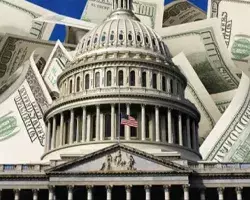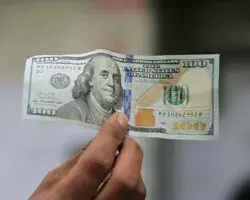A Comprehensive Guide on How to Trade USD/CAD Currency Pair
The USD/CAD currency pair represents the relationship between the US dollar and the Canadian dollar and is a favored choice among currency traders due to its active trading hours, volatility, and relatively tight spreads. In this article, we will explore the key trading characteristics of USD/CAD, including its trading time, volatility, and spread, as well as factors that affect the US to CAD exchange rate, such as macroeconomic indicators, monetary policy, commodity prices, market sentiment and risk appetite, and political and geopolitical factors.
Understanding National Debt: Implications and Consequences
Recently, all the headlines were focused on the US debt ceiling, sparking discussions and concerns about the state of the nation's finances. The US debt has become a topic of great importance, drawing attention from economists, policymakers, and the public alike. But why is everyone talking about US debt? The answer lies in the significant implications it holds for the economy, financial stability, international relations, and the political landscape.
Mixed Market Reactions Amidst Uncertainties in Russia and Inflation Concerns | Daily Market Analysis
Key events: Eurozone - ECB President Lagarde Speaks USA - Building Permits USA - Core Durable Goods Orders (MoM) (May) USA - CB Consumer Confidence (Jun) USA - New Home Sales (May) On Monday, US stocks concluded the day with a decline as investors exercised caution in their approach towards riskier assets due to uncertainties surrounding the outcome of the disrupted mutiny in Russia over the weekend.
What Affects the US Dollar Rate?
The US dollar is one of the most widely traded currencies in the world and plays a crucial role in international trade and finance. As a result, many factors can impact the value of the US dollar, including economic indicators, geopolitical events, and changes in monetary policy. Understanding the various factors that affect the US dollar rate is essential for investors, traders, and businesses who rely on the currency for their transactions.
The US Dollar Isn't Going Anywhere: How Greenback Became the World's Currency
Before World War II, the British pound sterling was the most powerful currency of the world, due to the large number of colonies and dominions of the British Empire around the globe. Then, the US dollar has become the world's dominant reserve currency, with over 60% of global foreign exchange reserves held in dollars. The dollar's supremacy has been a defining feature of the global economy since the end of World War II. However, the dollar's ascent to its position as the world's reserve currency was not preordained.
Market Trends Await as Volume Returns to Normal; Employment Report and Data Releases in Focus | Daily Market Analysis
Key events:





